SaaS Customer Onboarding Guide: Tips, Metrics, and Tools That You Can Use
Customer onboarding is one of the most crucial stages of the customer lifecycle. It sets up the tone of the relationship between you and your customers. You can think of customer onboarding as the stage that you make the first impression on your customers, reassure them about your product, and ensure that your customers know exactly how they should be using your product to reap the most benefits from it.
When it comes to SaaS customer onboarding, it’s important to remember that customers have plenty of options. This means that even though someone has purchased your product, that doesn’t necessitate that they will continue to use it. Therefore, to retain your new customers, you need to bring your A-game to your customer onboarding. If you can nail the customer onboarding stage, it will set you up for success and prevent your customers from questioning why they purchased your product in the first place.
The SaaS customer onboarding process consists of several different steps and tools, which help you to give the best first impression. You need to find the perfect combination of these tools and create your own customer onboarding plan according to your product’s and customers’ needs.
Why Is SaaS Customer Onboarding Important?
Customer onboarding is extremely important for SaaS because it helps users find value in your product and use it effectively without any problems.

You wouldn’t want your customers to use your product just once and then churn. Therefore, perfecting the customer onboarding experience can help you ensure that your customers always come back to your product. You need to provide your customers with something that they cannot resist so they cannot leave your product/service.
Integral Elements of Customer Onboarding
A good SaaS user onboarding process is one that is engaging, helpful, and self-explanatory. Such an onboarding sequence will show your users that you value their time and are trying to assist them as they use your product. A customer onboarding process that is clear and simple, but appealing, is the best way that you can keep your customers as a SaaS business.
Let’s take a look at some elements that you should keep in mind when you’re planning your strategy for customer onboarding.
Welcome Email
Welcome emails are the first touchpoint between you and your customers after their purchase. They enable you to communicate directly with your customers without losing time. A study from 2018 shows that welcome emails have an open rate of over 91% making them the most welcome (pun intended!) form of emails. That’s why you should focus on making your welcome emails as engaging, emotionally-appealing, and friendly as possible.
But how can you write good welcome emails?
Well, even though a good welcome email should make your customers feel that you appreciate and are grateful for their purchases, these emails also should be precise, concise, and clear. The ones with distracting visuals or complex sentences will divide your customer’s attention, prevent you from conveying your message.
By using different email marketing metrics, you can easily track the performance of your email marketing strategy and make improvements to it. Seeing your strengths and weaknesses will help you write and deliver better emails and improve the customer experience.
Onboarding Email Sequence
The next step for successful SaaS customer onboarding should be engaging with your customers regularly. A quick and easy way to do so is using an effective onboarding email sequence. These emails are great tools to communicate with your customers, helping them take the next step in the funnel: complete their sign-up, learn about the new features, update their account, check their subscription, etc.
Here, it’s important to know that you’ll have to test the messaging and frequency of these emails to see what works and what doesn’t..
A successful onboarding email sequence will constantly remind your customer that you are just one click, message, or email away. In this way, you can be in control of the onboarding stage and set your customers up for success.
At this stage, segmentation is also important to create the best onboarding email sequence for all kinds of users. Since the actions that you want your customers to take and messages you want to convey differs from customer to customer, you need to deliver the right emails based on their situation and what their expectations from your product may be.
For example, for active users, you might send a second email about the features of the product to maximize feature adoption. However, for a passive user, you might send an email on how customers can log into their accounts.
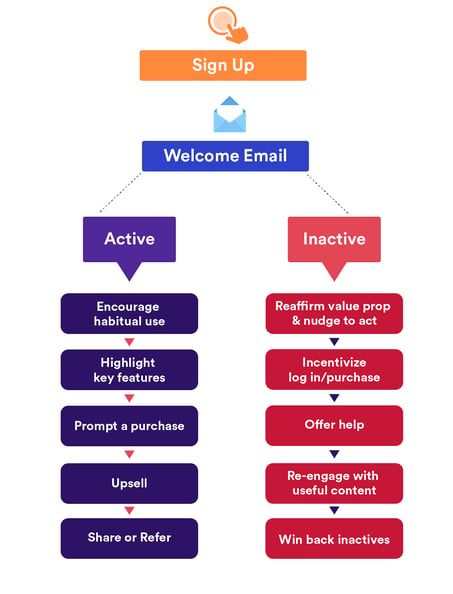
Onboarding Guides
Onboarding guides assist your customers when they’re new to using your product. After the purchase, it is crucial for your customers to proceed to the signup stage to be able to use the product effectively. Therefore, onboarding guides should be simple and easy. They should be direct to the point without confusing the customer on what to do. Similarly, the steps should be short and concise, only focusing on important aspects of that step. In this way, you can quickly help your customers to proceed in their lifecycles.

Product Tutorials
Product tutorials are key if you want your customers to understand exactly what each tab and button in your product will do. Customers tend to stop using a product if they need to spend a lot of time and effort to understand and learn. Therefore, providing a product tutorial after their sign-up is crucial to keep your customers.
Product tutorials should be easy to understand and follow. Since you want your customers to not have a hard time, you need to make a product tutorial that only focuses on your most important features and tools. Overbearing product tutorials packed with unnecessary information can have the opposite effect and may even drive your customers away.
Documentation
Documentation is the section where you display the answers to common questions or problems. Here, you don’t offer personal help, but you try to provide the quickest answer to your customers’ problems. This section should give the best resources to your customers to troubleshoot without reaching customer support. In this way, without losing their precious time, your customers can find solutions. These answers help you address problems before your customers decide to give up on your product.

How to Measure Customer Onboarding
Creating strategies for your SaaS customer onboarding are important, but they mean nothing if you don’t know which metrics to track. Here are some customer onboarding metrics that you should track how your customers feel about everything from your onboarding process to the features of your product:
- Customer Lifetime Value – CLTV
- Cusromer Retention
- Conversion Rate
- Time to Value – TTV
- Churn
- Onboarding Revenue
- Onboarding Process Completion Rate
- Customer Call Drop-Offs
- Total Contract Value – TCV
- Feature Adoption Rates
- Active User Count
- Session Time or Length
Now, these metrics may not make much sense if they’re viewed in isolation, however, combining them and viewing them together in a dashboard or report can help you drive key insights that can help you improve your processes.
Let’s see how that works.

The dashboard above contains marketing information from a few different metrics. Simply looking at the MQLs per week may not be enough. That said, if you see these numbers in the context of the complete funnel, the number of touchpoints it takes to make a sale, and the total number of MQLs you got for the current month, you’ll be able to get a better understanding of how your weekly performance has been.
Similarly, by combining the customer onboarding metrics stated above, you can easily detect your weaknesses and strategize accordingly. Without these metrics, your customer onboarding will be similar to walking in the dark. Therefore, you need to be using the best customer onboarding tool to have a successful onboarding.
Best Customer Onboarding Tools To Use
As mentioned above, customers today have plenty of options which is why you need to ensure that they see your SaaS business and product as the ideal solution to their problems. For this, you need to create a solid user onboarding plan, know how to measure performance, and have a robust tool in your arsenal to help you help you to track, analyze, and understand your customer onboarding and how your customers are responding to it.
Here are a few great tools that you can use to see track the effectiveness of your SaaS customer onboarding process:
UserPilot
UserPilot is a tool that helps customer success teams analyze and understand customer patterns and behaviors to improve your product adoption rates. It enables you to identify problems in your customer onboarding through behavior-driven product experiences. With UserPilot, you can easily track new signups and provide useful tips to your customers that will help them across the lifecycle. Since it is a no-code tool, it is also very easy to learn and understand the tool.
With UserPilot you can track users & accounts, events, and even perform user segmentation.
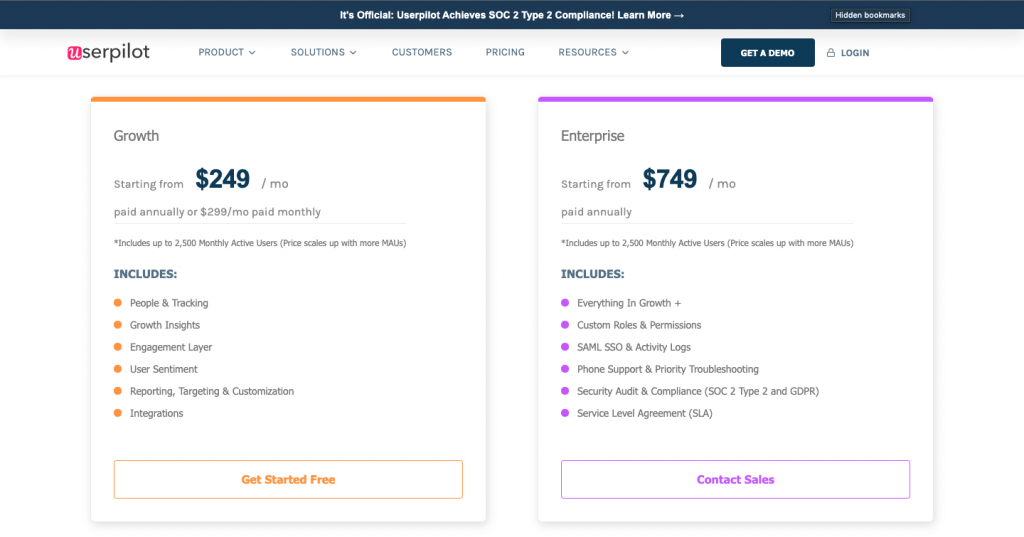
UserGuiding
UserGuiding is a digital adaptation tool that helps you to provide better in-app experiences to increase your customer onboarding. With UserGuiding, you can easily create and track user journeys, which helps you identify in which part of your product you lose your customers. It does not require you to have coding knowledge. Therefore, after subscribing to the tool, you can easily start tracking important metrics for customer onboarding.
With UserGuiding you can create Interactive Product Tours, Tooltips and Hotspots, User Onboarding Checklists, Resource Centers, NPS Surveys, and custom user segments.
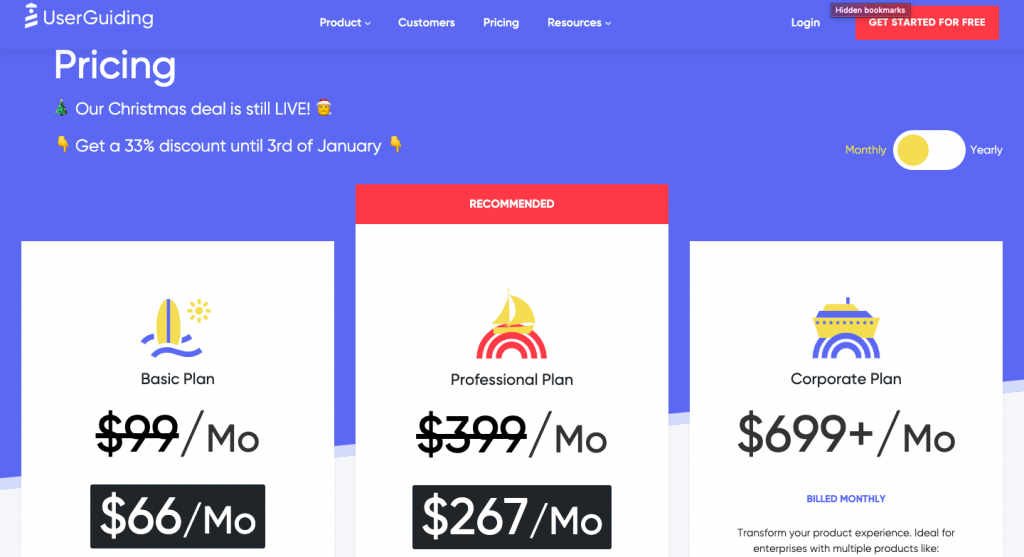
HockeyStack
HockeyStack is a no-code analytics and attribution tool that allows you to unify data from marketing, sales, product, and revenue. This means that you’ll be able to figure out exactly how your customers responded to your onboarding sequence by measuring feature engagement, understand how long it takes to make a sale, and unravel the entire customer journey to find out which touchpoints you can optimize for an overall better customer experience.
The best part about HockeyStack is that it comes with a survey tool through which you can ask new users how they feel about everything from your products’ features to your onboarding – leaving absolutely nothing to guesswork.
HockeyStack’s Features
Here are some no-code features offered by HockeyStack:
- Surveys: Using HockeyStack surveys, you can get key insights from your customers about how they found out about your product and what they think about their experience so far.
- Step-by-step user journey: HockeyStack enables you to view each action and conversion of the user journey to dive deeper into customer behavior.
- Funnels & goals: Users can set goals that make the most sense for their business such as signups, activations, paid conversions, or even blog post and landing page views.
- Revenue attribution: Go into granular detail on what really drives revenue by finding out the MRR of each content piece and marketing channel
and more

HockeyStack Pricing
HockeyStack has two plans, both of which have a 14-day trial with a 30-day refund guarantee.
You can check out the pricing page here.

HockeyStack Integrations
- Paddle
- Stripe
- Hubspot
- Mailchimp
- Crisp
- Salesforce (coming soon)
- Zapier (coming soon)
Pendo
Pendo is a web analytics tool that helps businesses to achieve successful digital adaptation and customer engagement. It is both a great tool for customer onboarding and other aspects of a SaaS business. Therefore, if you want to have a tool that does not only tracks metrics about customer onboarding, choosing Pendo would be a wise decision.
With Pendo, you can track customer behaviors, customer activity, retention, upselling, cross-selling, and much more.

SendGrid (for onboarding emails)
SendGrid is a trusted email delivery platform that can assist you in email marketing. It does this by helping its customers send effective emails, track customer behaviors, and complete successful customer onboarding,
SendGrid’s offers a few different API plans that can be of great importance if you rely on multiple tools in your data analytics stack.
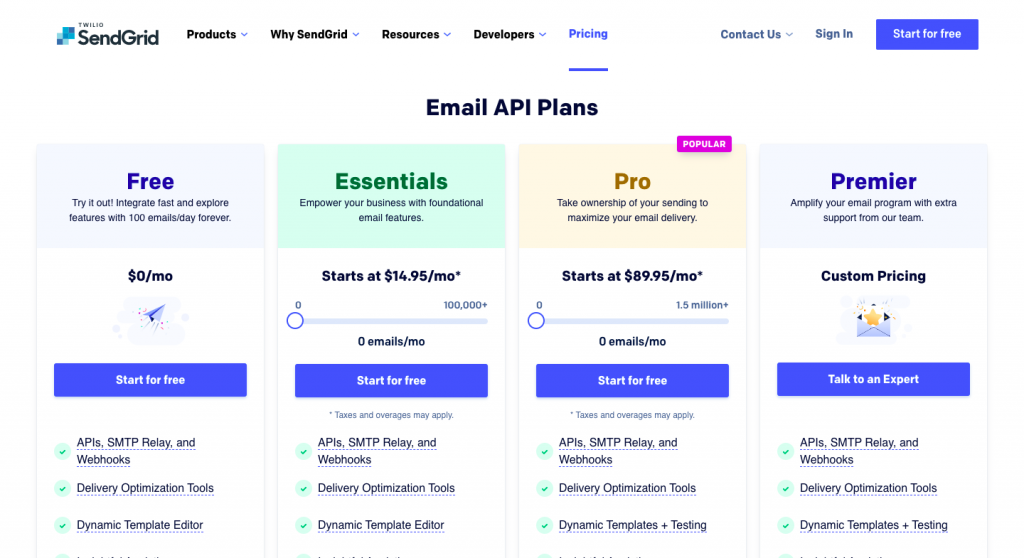
MailChimp (for onboarding emails)
MailChimp rose to its popularity as one of the best email marketing tools in the market. However, today, MailChimp, has become a full marketing platform, helping its customers build better landing pages, automate tasks, social media scheduling, and perform a number of other similar actions.
MailChimp is a user-friendly and simple tool, which is why it’s preferred by all types of customers. It is a great tool to track and analyze customers relationships and your online marketing strategies.
As an email marketing platform, MailChimp helps you to send the right messages at the right time in the right place, which enables you to connect with your customers without losing time. The screenshot below will give you an idea of how much MailChimp will cost you.
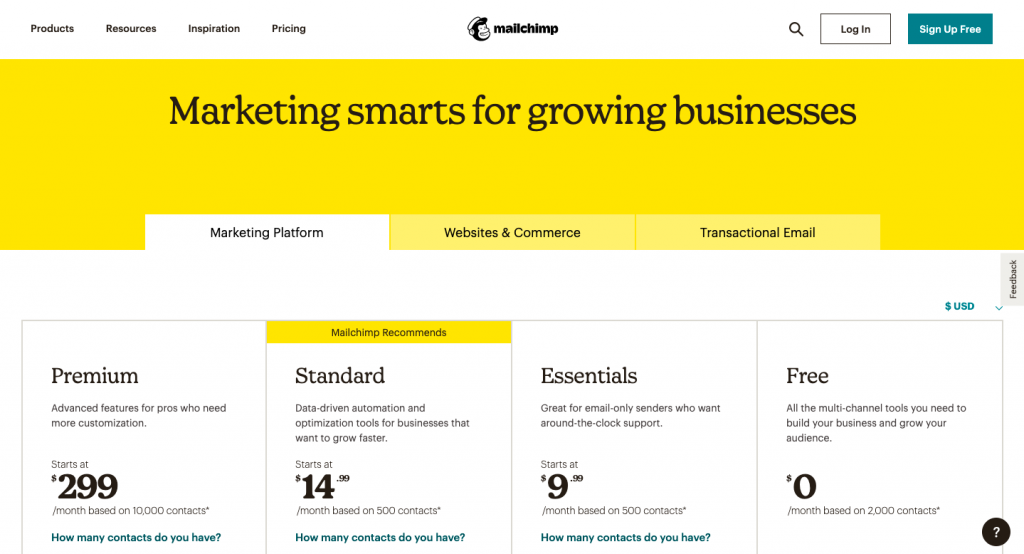
Document360 (for documentation)
Document360 is one of the leading knowledgebase platforms in the market. This tool helps users build a self-service knowledge base, enabling them to quickly identify problems and offer solutions.
Document360 contains a built-in editor, which can be used to automate a variety of tasks. With the built-in editor, you can easily share code snippets, upload screenshots, and include links to articles.
It is a versatile, user-friendly, and highly customizable tool that can be adapted by any type of business.
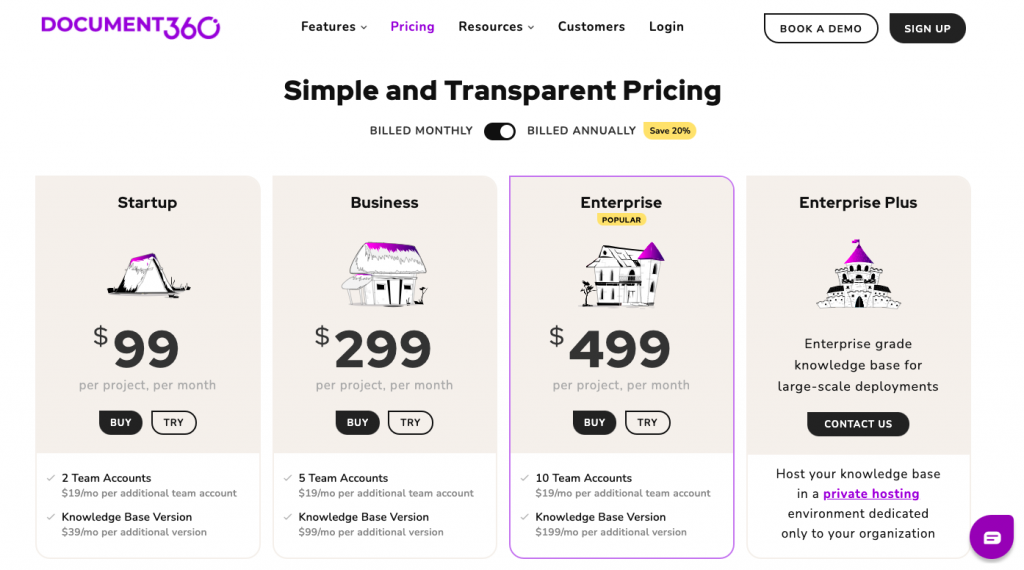
Conclusion
Customer onboarding is an important process for any SaaS business. Done well, SaaS customer onboarding can help you create a loyal customer base, identify problems in your marketing strategies, and improve your communication with your customers. On the other hand, poor customer onboarding can cause confusion, and you will ultimately end up losing customers to your competitors.
Customer centricity and customer marketing are at the heart of a successful user onboarding process. In other words, you need to put your customers in the center of the entire process and put their needs first. This will not only help you gain new customers but also keep new ones.
There are a lot of tools to create customer onboarding, but to know which ones are more effective for your business, you should track and analyze some metrics. Therefore, finding a web analytics tool will, in the long term, help you a lot. While you are choosing a tool to measure customer onboarding, you should think about your business size, what is important to you, and what are your customers’ needs.
FAQ
Customer onboarding is the process that your customers go through when they first purchase your product. In other words, it represents the first few stages of a customer’s lifecycle.
TTV is the abbreviation for Time to Value. It measures the time it takes a new customer to realize and understand the value of your product. A low TTV indicates that you are clearly conveying the message you want to convey while high TTV shows you that your customers cannot understand what your product provides for them.
MailChimp offers four different price plans according to the number of contacts: Free, Essentials, Standard, and Premium. While the Free plan costs nothing, the Essentials plan is $9, the Standard plan is $14, and the Premium plan is $299.



